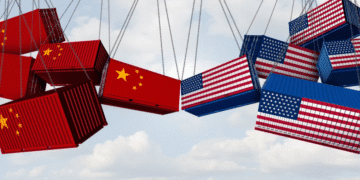Athira Sethu
Kochi, 30 April 2025
In April, Chinese factory output fell at its fastest pace in more than one year. That has concerned most analysts and accelerated demands for China’s government to intervene with further assistance for the economy. The decline occurred at the same time that the U.S. rolled out new tariffs—additional charges on Chinese imports—which damaged China’s export business.
These new tariffs brought about a sharp slowdown following two months of modest rebound for Chinese factories. Most Chinese factory bosses had been hurrying to send products ahead of the tariffs beginning, but now that the taxes have begun, that plan is no longer effective.
China’s official factory gauge, known as the PMI (Purchasing Managers’ Index), dropped to 49.0 in April. Anything below 50 indicates factory activity is contracting. This was the lowest since December 2023. The services and construction sector also cooled, but not as much.
Experts indicate that this decline indicates that China is still grappling with low demand both domestically and internationally.
China has other significant issues as well such as sluggish growth in income, declining prices, and a malfunctioning property sector. China relied primarily on exports to maintain its economy following the COVID-19 pandemic, but since exports have been declining now, it needs to increase expenditure within the nation.
The government will take further measures to aid the economy. In a statement made on Monday, officials indicated they will introduce fresh policies in the second quarter of the year in order to be in line with the prevailing scenario. The Communist Party has also vowed to assist workers and firms hit hardest by the U.S. tariffs.
Most analysts believe that yet another trade war between the U.S. and China may further worsen China’s economy in the coming months.





















